 W
WThe Lockheed Corporation was an American aerospace company. Lockheed was founded in 1926 and later merged with Martin Marietta to form Lockheed Martin in 1995. Its founder, Allan Lockheed, had earlier founded the similarly named but otherwise-unrelated Loughead Aircraft Manufacturing Company, which was operational from 1912 to 1920.
 W
WThe Lockheed bribery scandals encompassed a series of bribes and contributions made by officials of U.S. aerospace company Lockheed from the late 1950s to the 1970s in the process of negotiating the sale of aircraft.
 W
WConvair, previously Consolidated Vultee, was an American aircraft manufacturing company that later expanded into rockets and spacecraft. The company was formed in 1943 by the merger of Consolidated Aircraft and Vultee Aircraft. In 1953 it was purchased by General Dynamics, and operated as their Convair Division for most of its corporate history.
 W
WThe Corona program was a series of American strategic reconnaissance satellites produced and operated by the Central Intelligence Agency Directorate of Science & Technology with substantial assistance from the U.S. Air Force. The Corona satellites were used for photographic surveillance of the Soviet Union (USSR), the People's Republic of China, and other areas beginning in June 1959 and ending in May 1972.
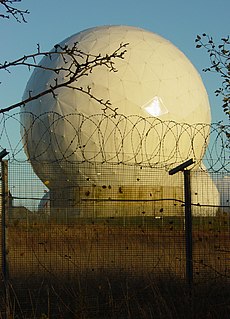 W
WECHELON, originally a secret government code name, is a surveillance program operated by the United States with the aid of four other signatory states to the UKUSA Security Agreement: Australia, Canada, New Zealand, and the United Kingdom, also known as the Five Eyes.
 W
WHanoi Taxi is a Lockheed C-141 Starlifter strategic airlift aircraft that was in service with the United States Air Force and became famous for bringing back the first returned prisoners of war in Operation Homecoming. This aircraft, which was delivered to the Air Force in 1967, was the last C-141 to be withdrawn from service after a career of 43 years.
 W
WThe Hubble Space Telescope is a space telescope that was launched into low Earth orbit in 1990 and remains in operation. It was not the first space telescope, but it is one of the largest and most versatile, well known both as a vital research tool and as a public relations boon for astronomy. The Hubble telescope is named after astronomer Edwin Hubble and is one of NASA's Great Observatories, along with the Compton Gamma Ray Observatory, the Chandra X-ray Observatory, and the Spitzer Space Telescope.
 W
WLaura Houghtaling Ingalls was an American pilot who won the Harmon Trophy. She was arrested in December 1941 and convicted of failing to register as a paid German agent.
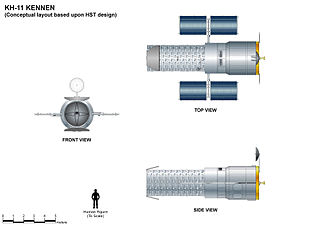 W
WThe KH-11 KENNEN is a type of reconnaissance satellite first launched by the American National Reconnaissance Office in December 1976. Manufactured by Lockheed in Sunnyvale, California, the KH-11 was the first American spy satellite to use electro-optical digital imaging, and so offer real-time optical observations.
 W
WLI-900 is a type of reusable surface insulation tile developed and manufactured by Lockheed Missiles and Space Company in Sunnyvale, California. It was designed for use on the Space Shuttle orbiter as part of its thermal protection system to minimize thermal conductivity while providing maximum thermal shock resistance.
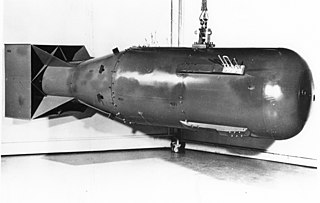 W
W"Little Boy" was the codename for the type of atomic bomb dropped on the Japanese city of Hiroshima on 6 August 1945 during World War II. It was the first nuclear weapon used in warfare. The bomb was dropped by the Boeing B-29 Superfortress Enola Gay piloted by Colonel Paul W. Tibbets, Jr., commander of the 509th Composite Group of the United States Army Air Forces and Captain Robert A. Lewis. It exploded with an energy of approximately 15 kilotons of TNT (63 TJ) and caused widespread death and destruction throughout the city. The Hiroshima bombing was the second man-made nuclear explosion in history, after the Trinity test.
 W
WHollywood Burbank Airport, legally and formerly marketed as Bob Hope Airport, is a public airport 3 miles (4.8 km) northwest of downtown Burbank, in Los Angeles County, California, United States. The airport serves Downtown Los Angeles and the northern Greater Los Angeles area, including Glendale, Pasadena, and the San Fernando Valley. It is closer to Griffith Park, Universal Studios Hollywood, Hollywood, and Downtown Los Angeles than Los Angeles International Airport (LAX), and is the only airport in the area with a direct rail connection to Downtown Los Angeles. Non-stop flights mostly serve cities in the western United States, while JetBlue Airways has daily flights to New York City and Boston and Delta Airlines has daily flights to Atlanta.
 W
WThe Lockheed P-3 Orion is a four-engine turboprop anti-submarine and maritime surveillance aircraft developed for the United States Navy and introduced in the 1960s. Lockheed based it on the L-188 Electra commercial airliner. The aircraft is easily distinguished from the Electra by its distinctive tail stinger or "MAD Boom", used for the magnetic detection of submarines.
 W
WLockheed PV-2 Harpoon, U.S. Navy Bureau Number 37396 , civil registration N7265C, named "Hot Stuff", is located at 3867 N. Aviation Way, Mount Comfort, Indiana. The aircraft, an intact example of a World War II anti-submarine patrol bomber, was added to the National Register of Historic Places on April 23, 2009. It was built in 1945 by the Lockheed Aircraft Corporation, and is one of only 104 built of this PV-2 variant of the Lockheed Ventura. At the time of its listing, it was the only complete, operable example of a PV-2 in the United States, although one was being restored in Wisconsin. While this particular plane did not see combat, the type was used in the Aleutian Islands during World War II. The property was the featured listing in the National Park Service's weekly list of May 1, 2009.
 W
WDSRV-1 Mystic is a deep-submergence rescue vehicle that is rated to dive up to 5,000 feet. She was built by Lockheed for the US Navy at a construction cost of $41 million and launched 24 January 1970. She was declared fully operational in 1977 and named Mystic.
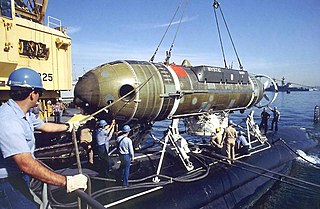 W
WMystic class is a class of Deep-Submergence Rescue Vehicles (DSRVs), designed for rescue operations on submerged, disabled submarines of the United States Navy or foreign navies. The two submarines of the class were never used for this purpose, and were replaced by the Submarine Rescue Diving Recompression System.
 W
WNOAA-19, designated NOAA-N' prior to launch, is the last of the United States National Oceanic and Atmospheric Administration's POES series of weather satellites. NOAA-19 was launched on February 6, 2009.
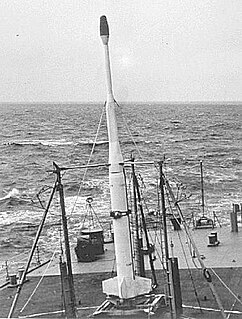 W
WOperation Argus was a series of United States low-yield, high-atmosphere nuclear weapons tests and missile tests "secretly" conducted from 27 August to 9 September 1958 over the South Atlantic Ocean. The tests were performed by the Defense Nuclear Agency.
 W
WLockheed Shipbuilding and Construction Company, was a shipyard in Seattle, Washington on Harbor Island at the mouth of the Duwamish River. Founded in 1898 as the Puget Sound Bridge and Dredging Company, the company that built Harbor Island, it was purchased by Lockheed in 1959. The shipyard was permanently closed in 1988.
 W
WThe Space Interferometry Mission, or SIM, also known as SIM Lite, was a planned space telescope proposed by the U.S. National Aeronautics and Space Administration (NASA), in conjunction with contractor Northrop Grumman. One of the main goals of the mission was the hunt for Earth-sized planets orbiting in the habitable zones of nearby stars other than the Sun. SIM was postponed several times and finally cancelled in 2010. In addition to detecting extrasolar planets, SIM would have helped astronomers construct a map of the Milky Way galaxy. Other important tasks would have included collecting data to help pinpoint stellar masses for specific types of stars, assisting in the determination of the spatial distribution of dark matter in the Milky Way and in the local group of galaxies and using the gravitational microlensing effect to measure the mass of stars. The spacecraft would have used optical interferometry to accomplish these and other scientific goals.
 W
WTrident, also known as the Trident nuclear programme or Trident nuclear deterrent, covers the development, procurement and operation of nuclear weapons in the United Kingdom and their means of delivery. Its purpose as stated by the Ministry of Defence is to "deter the most extreme threats to our national security and way of life, which cannot be done by other means". Trident is an operational system of four Vanguard-class submarines armed with Trident II D-5 ballistic missiles, able to deliver thermonuclear warheads from multiple independently targetable re-entry vehicles (MIRVs). It is operated by the Royal Navy and based at Clyde Naval Base on the west coast of Scotland. At least one submarine is always on patrol to provide a continuous at-sea capability. Each one carries up to eight missiles and forty warheads, although their capacity is higher. The missiles are manufactured in the United States, while the warheads are British.
 W
WThe UGM-27 Polaris missile was a two-stage solid-fueled nuclear-armed submarine-launched ballistic missile. As the United States Navy's first SLBM, it served from 1961 to 1996.
 W
WThe UGM-73 Poseidon missile was the second US Navy nuclear-armed submarine-launched ballistic missile (SLBM) system, powered by a two-stage solid-fuel rocket. It succeeded the UGM-27 Polaris beginning in 1972, bringing major advances in warheads and accuracy. It was followed by Trident I in 1979, and Trident II in 1990.
 W
WThe UGM-133A Trident II, or Trident D5 is a submarine-launched ballistic missile (SLBM), built by Lockheed Martin Space Systems in Sunnyvale, California, and deployed with the American and British navies. It was first deployed in March 1990, and remains in service. The Trident II Strategic Weapons System is an improved SLBM with greater accuracy, payload, and range than the earlier Trident C-4. It is a key element of the U.S. strategic nuclear triad and strengthens U.S. strategic deterrence. The Trident II is considered to be a durable sea-based system capable of engaging many targets. It enhances the U.S. position in strategic arms negotiation with performance and payload flexibility that can accommodate active treaty initiatives. The Trident II's increased payload allows nuclear deterrence to be accomplished with fewer submarines, and its high accuracy—approaching that of land-based missiles—enables it to be used as a first strike weapon.
 W
WThe Vega Aircraft Corporation was a subsidiary of the Lockheed Aircraft Company in Burbank, California responsible for much of its parent company's production in World War II.